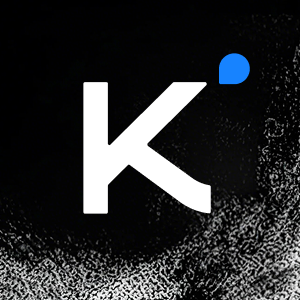LeaferJS中限制对象移动范围的实现方法
2025-06-27 02:32:11作者:凌朦慧Richard
在图形编辑和交互式应用中,经常需要限制某些图形元素的移动范围,使其只能在特定区域内拖动。LeaferJS作为一款强大的图形渲染库,提供了多种方式来实现这一功能。
基础实现方法
最简单的限制移动范围方法是通过监听拖动事件,在移动过程中判断对象位置是否超出边界。以下是基本实现思路:
- 监听对象的PointerEvent.DOWN事件,记录拖动开始状态
- 在PointerEvent.MOVE事件中计算新位置
- 判断新位置是否超出边界范围
- 如果未超出则更新位置,否则保持原位置
const box = new Box({
width: 200,
height: 200,
fill: '#FF4B4B'
});
const ellipse = new Ellipse({
width: 100,
height: 100,
fill: '#FEB027',
draggable: false
});
box.add(ellipse);
let isDragging = false;
ellipse.on(PointerEvent.DOWN, () => { isDragging = true; });
app.on(PointerEvent.MOVE, (e) => {
if (isDragging) {
const bounds = box.getBounds('box', 'local');
const newX = ellipse.x + e.movementX;
const newY = ellipse.y + e.movementY;
if (newX >= 0 && newX + ellipse.width <= bounds.width &&
newY >= 0 && newY + ellipse.height <= bounds.height) {
ellipse.x = newX;
ellipse.y = newY;
}
}
});
考虑变换后的范围检测
当对象应用了旋转、缩放等变换时,简单的范围判断会失效。这时需要使用世界坐标系下的范围检测:
app.on(PointerEvent.MOVE, (e) => {
if (isDragging) {
const parentBounds = box.getBounds('box', 'world');
const selfBounds = ellipse.getBounds('box', 'world');
const newX = selfBounds.x + e.movementX;
const newY = selfBounds.y + e.movementY;
if (newX >= parentBounds.x &&
newX + selfBounds.width <= parentBounds.x + parentBounds.width &&
newY >= parentBounds.y &&
newY + selfBounds.height <= parentBounds.y + parentBounds.height) {
const localPos = box.worldToLocal({ x: newX, y: newY });
ellipse.x = localPos.x;
ellipse.y = localPos.y;
}
}
});
使用内置dragBounds属性
最新版本的LeaferJS提供了更简便的方式——直接使用dragBounds属性来限制拖动范围:
const ellipse = new Ellipse({
width: 100,
height: 100,
fill: '#FEB027',
draggable: true,
dragBounds: {
x: 0,
y: 0,
width: 200,
height: 200
}
});
这种方式会自动处理各种变换情况,是最推荐的实现方法。dragBounds可以指定相对于父容器的范围,支持旋转、缩放等各种变换下的精确范围检测。
实际应用建议
- 对于简单场景,优先使用dragBounds属性
- 需要自定义拖动逻辑时,使用世界坐标系范围检测
- 注意性能优化,避免在移动事件中进行过多计算
- 考虑用户体验,可以添加视觉反馈(如半透明、边框高亮等)
通过合理运用这些技术,可以轻松实现各种复杂的拖动限制需求,为用户提供更专业的交互体验。
登录后查看全文
热门项目推荐
相关项目推荐
 ERNIE-4.5-VL-28B-A3B-ThinkingERNIE-4.5-VL-28B-A3B-Thinking 是 ERNIE-4.5-VL-28B-A3B 架构的重大升级,通过中期大规模视觉-语言推理数据训练,显著提升了模型的表征能力和模态对齐,实现了多模态推理能力的突破性飞跃Python00
ERNIE-4.5-VL-28B-A3B-ThinkingERNIE-4.5-VL-28B-A3B-Thinking 是 ERNIE-4.5-VL-28B-A3B 架构的重大升级,通过中期大规模视觉-语言推理数据训练,显著提升了模型的表征能力和模态对齐,实现了多模态推理能力的突破性飞跃Python00 unified-cache-managementUnified Cache Manager(推理记忆数据管理器),是一款以KV Cache为中心的推理加速套件,其融合了多类型缓存加速算法工具,分级管理并持久化推理过程中产生的KV Cache记忆数据,扩大推理上下文窗口,以实现高吞吐、低时延的推理体验,降低每Token推理成本。Python03
unified-cache-managementUnified Cache Manager(推理记忆数据管理器),是一款以KV Cache为中心的推理加速套件,其融合了多类型缓存加速算法工具,分级管理并持久化推理过程中产生的KV Cache记忆数据,扩大推理上下文窗口,以实现高吞吐、低时延的推理体验,降低每Token推理成本。Python03 Kimi-K2-ThinkingKimi K2 Thinking 是最新、性能最强的开源思维模型。从 Kimi K2 开始,我们将其打造为能够逐步推理并动态调用工具的思维智能体。通过显著提升多步推理深度,并在 200–300 次连续调用中保持稳定的工具使用能力,它在 Humanity's Last Exam (HLE)、BrowseComp 等基准测试中树立了新的技术标杆。同时,K2 Thinking 是原生 INT4 量化模型,具备 256k 上下文窗口,实现了推理延迟和 GPU 内存占用的无损降低。Python00
Kimi-K2-ThinkingKimi K2 Thinking 是最新、性能最强的开源思维模型。从 Kimi K2 开始,我们将其打造为能够逐步推理并动态调用工具的思维智能体。通过显著提升多步推理深度,并在 200–300 次连续调用中保持稳定的工具使用能力,它在 Humanity's Last Exam (HLE)、BrowseComp 等基准测试中树立了新的技术标杆。同时,K2 Thinking 是原生 INT4 量化模型,具备 256k 上下文窗口,实现了推理延迟和 GPU 内存占用的无损降低。Python00 Spark-Prover-7BSpark-Prover-7B is a 7B-parameter large language model developed by iFLYTEK for automated theorem proving in Lean4. It generates complete formal proofs for mathematical theorems using a three-stage training framework combining pre-training, supervised fine-tuning, and reinforcement learning. The model achieves strong formal reasoning performance and state-of-the-art results across multiple theorem-proving benchmarksPython00
Spark-Prover-7BSpark-Prover-7B is a 7B-parameter large language model developed by iFLYTEK for automated theorem proving in Lean4. It generates complete formal proofs for mathematical theorems using a three-stage training framework combining pre-training, supervised fine-tuning, and reinforcement learning. The model achieves strong formal reasoning performance and state-of-the-art results across multiple theorem-proving benchmarksPython00 MiniCPM-V-4_5MiniCPM-V 4.5 是 MiniCPM-V 系列中最新且功能最强的模型。该模型基于 Qwen3-8B 和 SigLIP2-400M 构建,总参数量为 80 亿。与之前的 MiniCPM-V 和 MiniCPM-o 模型相比,它在性能上有显著提升,并引入了新的实用功能Python00
MiniCPM-V-4_5MiniCPM-V 4.5 是 MiniCPM-V 系列中最新且功能最强的模型。该模型基于 Qwen3-8B 和 SigLIP2-400M 构建,总参数量为 80 亿。与之前的 MiniCPM-V 和 MiniCPM-o 模型相比,它在性能上有显著提升,并引入了新的实用功能Python00 Spark-Formalizer-7BSpark-Formalizer-7B is a 7B-parameter large language model by iFLYTEK for mathematical auto-formalization. It translates natural-language math problems into precise Lean4 formal statements, achieving high accuracy and logical consistency. The model is trained with a two-stage strategy combining large-scale pre-training and supervised fine-tuning for robust formal reasoning.Python00
Spark-Formalizer-7BSpark-Formalizer-7B is a 7B-parameter large language model by iFLYTEK for mathematical auto-formalization. It translates natural-language math problems into precise Lean4 formal statements, achieving high accuracy and logical consistency. The model is trained with a two-stage strategy combining large-scale pre-training and supervised fine-tuning for robust formal reasoning.Python00 GOT-OCR-2.0-hf阶跃星辰StepFun推出的GOT-OCR-2.0-hf是一款强大的多语言OCR开源模型,支持从普通文档到复杂场景的文字识别。它能精准处理表格、图表、数学公式、几何图形甚至乐谱等特殊内容,输出结果可通过第三方工具渲染成多种格式。模型支持1024×1024高分辨率输入,具备多页批量处理、动态分块识别和交互式区域选择等创新功能,用户可通过坐标或颜色指定识别区域。基于Apache 2.0协议开源,提供Hugging Face演示和完整代码,适用于学术研究到工业应用的广泛场景,为OCR领域带来突破性解决方案。00
GOT-OCR-2.0-hf阶跃星辰StepFun推出的GOT-OCR-2.0-hf是一款强大的多语言OCR开源模型,支持从普通文档到复杂场景的文字识别。它能精准处理表格、图表、数学公式、几何图形甚至乐谱等特殊内容,输出结果可通过第三方工具渲染成多种格式。模型支持1024×1024高分辨率输入,具备多页批量处理、动态分块识别和交互式区域选择等创新功能,用户可通过坐标或颜色指定识别区域。基于Apache 2.0协议开源,提供Hugging Face演示和完整代码,适用于学术研究到工业应用的广泛场景,为OCR领域带来突破性解决方案。00- HHowToCook程序员在家做饭方法指南。Programmer's guide about how to cook at home (Chinese only).Dockerfile014
 Spark-Scilit-X1-13B科大讯飞Spark Scilit-X1-13B基于最新一代科大讯飞基础模型,并针对源自科学文献的多项核心任务进行了训练。作为一款专为学术研究场景打造的大型语言模型,它在论文辅助阅读、学术翻译、英语润色和评论生成等方面均表现出色,旨在为研究人员、教师和学生提供高效、精准的智能辅助。Python00
Spark-Scilit-X1-13B科大讯飞Spark Scilit-X1-13B基于最新一代科大讯飞基础模型,并针对源自科学文献的多项核心任务进行了训练。作为一款专为学术研究场景打造的大型语言模型,它在论文辅助阅读、学术翻译、英语润色和评论生成等方面均表现出色,旨在为研究人员、教师和学生提供高效、精准的智能辅助。Python00- PpathwayPathway is an open framework for high-throughput and low-latency real-time data processing.Python00
最新内容推荐
SteamVR 1.2.3 Unity插件:兼容Unity 2019及更低版本的VR开发终极解决方案 ZLIB 1.3 静态库 Windows x64 版本:高效数据压缩解决方案完全指南 2023年最新HTMLCSSJS组件库:提升前端开发效率的必备资源 Qt控件CSS样式实例大全 - 打造现代化GUI界面的终极指南 Adobe Acrobat XI Pro PDF拼版插件:提升排版效率的专业利器 Photoshop作业资源文件下载指南:全面提升设计学习效率的必备素材库 32位ECC纠错Verilog代码:提升FPGA系统可靠性的关键技术方案 STDF-View解析查看软件:半导体测试数据分析的终极工具指南 PhysioNet医学研究数据库:临床数据分析与生物信号处理的权威资源指南 海康威视DS-7800N-K1固件升级包全面解析:提升安防设备性能的关键资源
项目优选
收起
OpenHarmony documentation | OpenHarmony开发者文档
Dockerfile
304
2.68 K
deepin linux kernel
C
24
7
Ascend Extension for PyTorch
Python
133
162
本项目是CANN提供的数学类基础计算算子库,实现网络在NPU上加速计算。
C++
630
222
旨在打造算法先进、性能卓越、高效敏捷、安全可靠的密码套件,通过轻量级、可剪裁的软件技术架构满足各行业不同场景的多样化要求,让密码技术应用更简单,同时探索后量子等先进算法创新实践,构建密码前沿技术底座!
C
1.03 K
459
暂无简介
Dart
595
130
React Native鸿蒙化仓库
JavaScript
232
307
🎉 (RuoYi)官方仓库 基于SpringBoot,Spring Security,JWT,Vue3 & Vite、Element Plus 的前后端分离权限管理系统
Vue
1.06 K
613
仓颉编译器源码及 cjdb 调试工具。
C++
123
612
本仓将收集和展示高质量的仓颉示例代码,欢迎大家投稿,让全世界看到您的妙趣设计,也让更多人通过您的编码理解和喜爱仓颉语言。
Cangjie
361
2.56 K